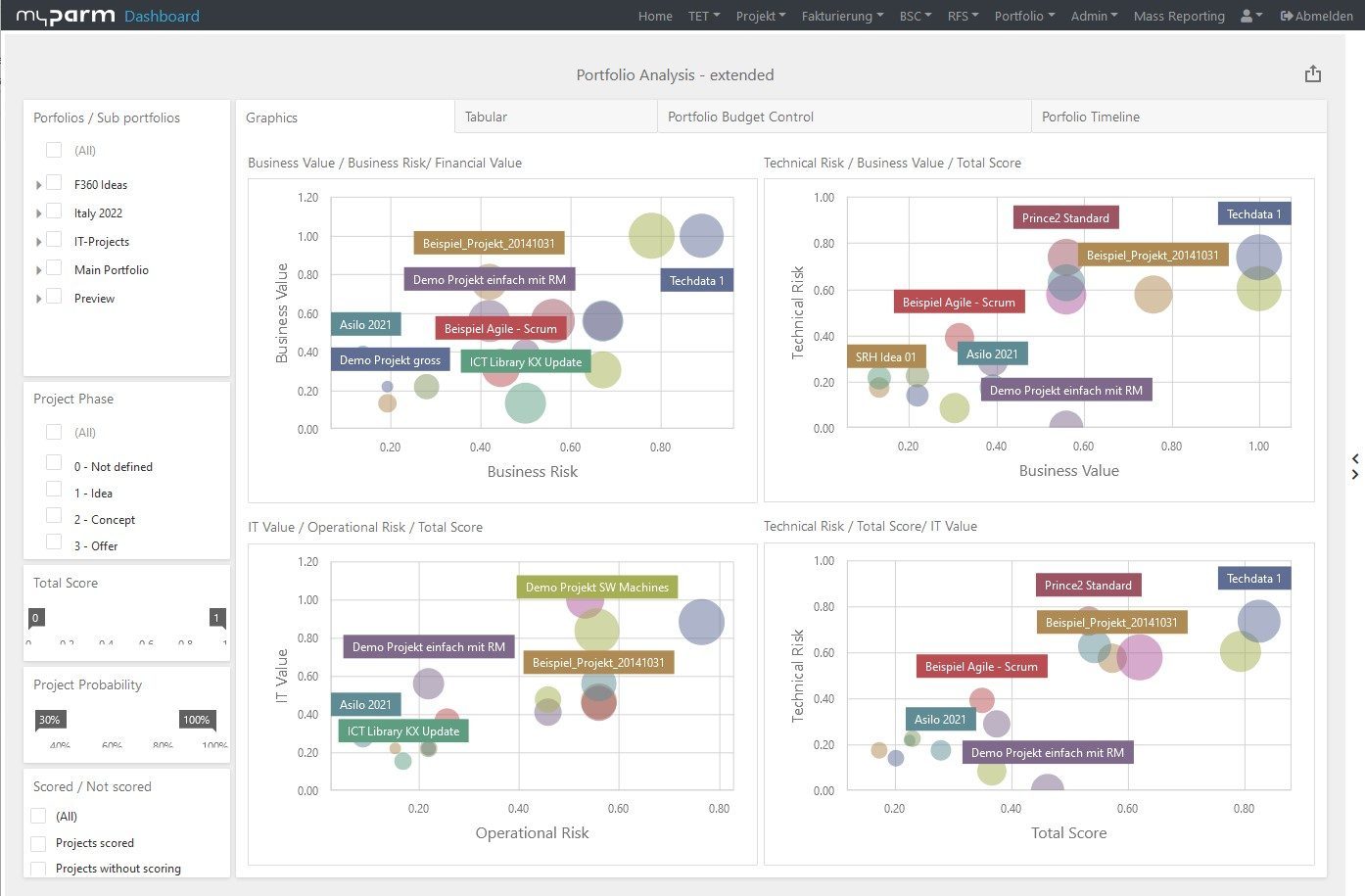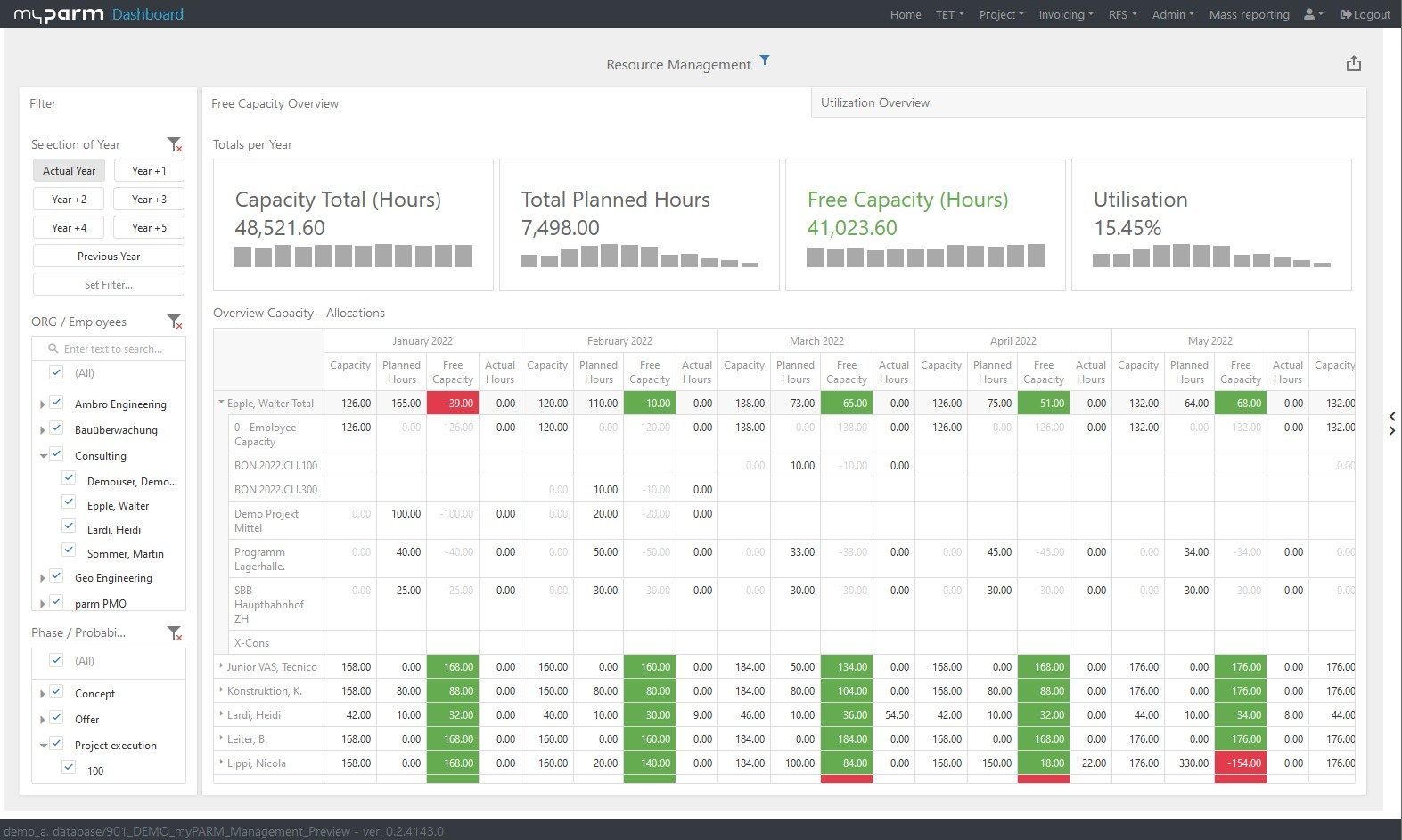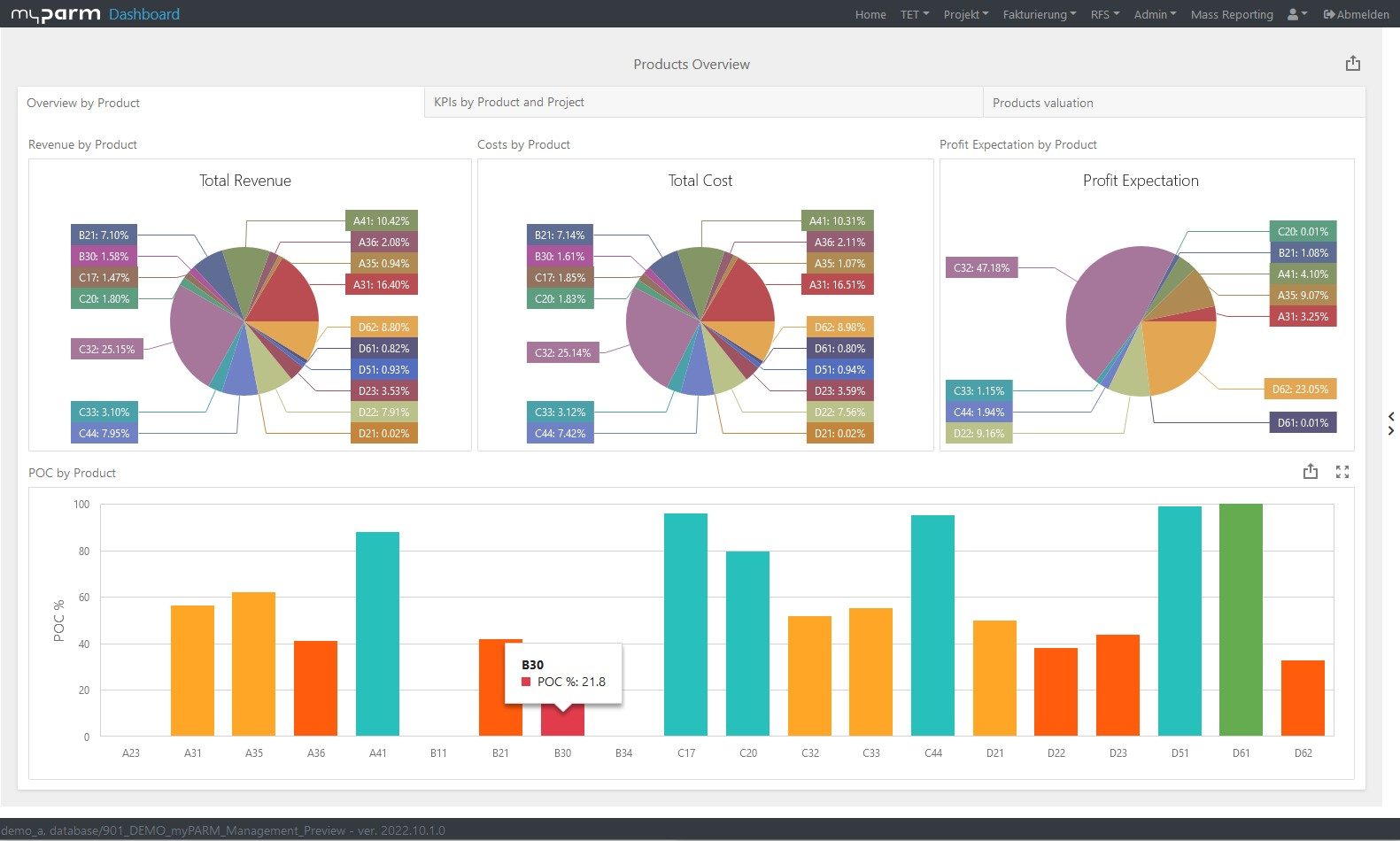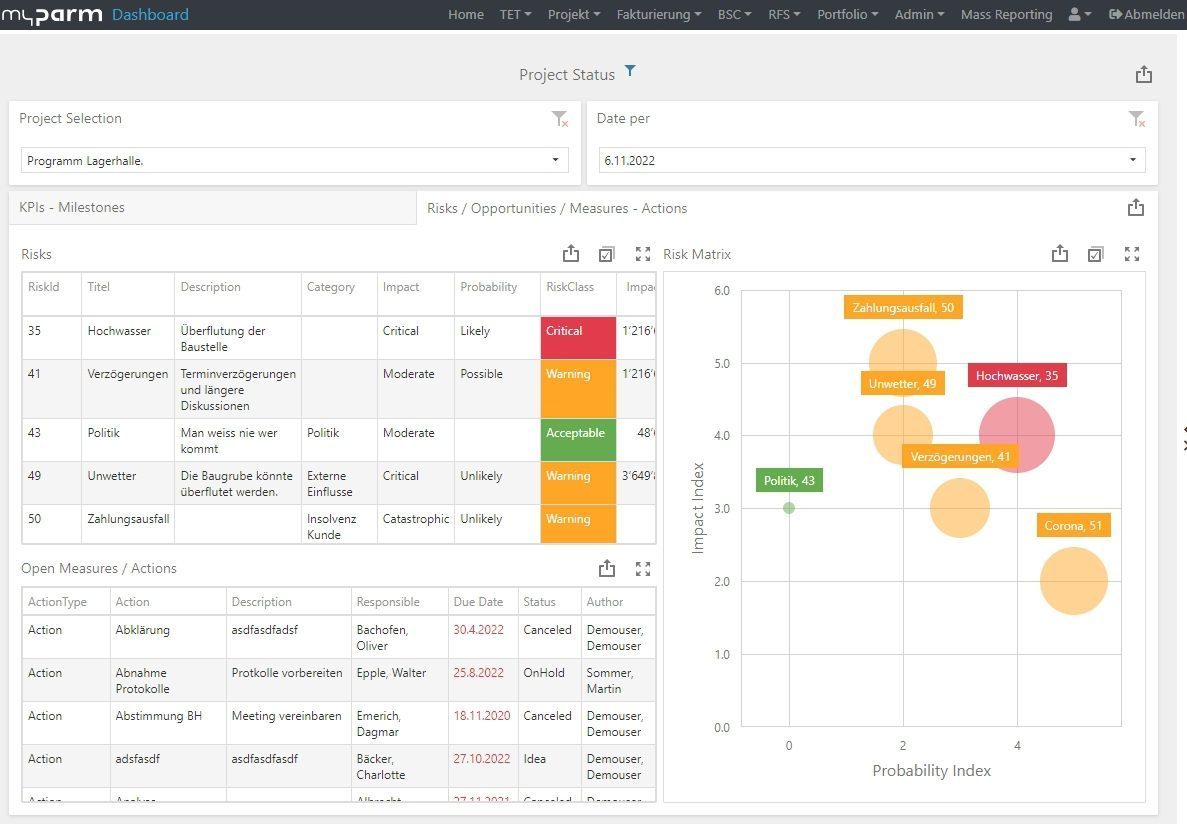The future of project controlling with business intelligence
How to control, revolutionise and optimise projects with data

Many business activities are not routine tasks within defined standard processes but are carried out in the form of projects. Effective project management is therefore crucial for the success of companies in the modern business world. Project controlling forms the backbone for structured and target-orientated project implementation. It enables companies to plan, monitor and control their projects from start to finish and to analyse their success. At a time when data has become one of the most valuable resources, conventional project controlling alone is no longer sufficient. This is where Business Intelligence (BI) takes over by transforming the immense amount of data generated in every project into meaningful insights. From analysing key performance indicators to visualising data in interactive dashboards, BI provides a clear insight into project progress and enables informed decisions for optimised project performance. We take a look at how business intelligence is revolutionising modern project controlling.
What is Project controlling?
Project controlling is an essential part of project management and refers to the systematic monitoring, controlling, and analysing of all aspects of a project. It involves planning, tracking, and controlling resources, budget, schedule, and quality to ensure that a project achieves its objectives. The main objective of project controlling is to ensure that a project is successfully completed by staying within the specified budget, timeframe and required quality.
Project controlling has evolved significantly over time, particularly through the integration of advanced technologies and data analysis. In the past, the focus was mainly on pure cost control and adherence to schedules. However, the days when a project manager could simply oversee all the activities of a project, understand dependencies, and control the projects are now over. Instead, projects today are often very complex, fast-moving and unique. They involve a large number of participants and also require realisation under time pressure. To stay well-informed and ready to act, project managers and stakeholders require accurate data on all project areas. This is why today’s project controlling is much more comprehensive and includes various dimensions, such as risk management, stakeholder communication or the continuous improvement of processes.
With the advent of digital technologies, how project data is collected and analysed has also changed. Instead of simple Excel spreadsheets, companies now use advanced software solutions to collect real-time data, monitor performance indicators and make decisions based on in-depth analysis.
Why is project controlling important?
- Mapping the project status and progress: Project controlling can be used to map the current status and progress of projects at any time.
- Efficient use of resources: Project controlling also helps to use resources such as time, money, and personnel efficiently in order to avoid waste and maximise profitability.
- Early detection of problems and deviations: Regular monitoring allows problems and their causes to be recognised at an early stage, making it possible to derive and take countermeasures in good time to get the project back on track.
- Quality assurance: Project controlling helps to ensure the quality of work is maintained at a high level by monitoring standards and guidelines and ensuring compliance.
- Stakeholder satisfaction: By making project progress transparent, stakeholders can be kept informed. This leads to trust and satisfaction.
- Basis for decisions: Well-implemented project controlling provides the data basis required for sound strategic decisions, whether for scaling projects, allocating resources, or selecting new projects.
Overall, project controlling plays a crucial role in ensuring that projects are completed successfully and achieve the desired objectives. It enables companies to react flexibly to challenges while keeping an eye on their long-term strategic goals.
The most important key figures for project controlling
In project controlling, there are a variety of key figures that help companies to monitor the progress of their projects and make informed decisions. Here are the most important:
- Cost Variance (CV): The budget variance sets the planned budget about the budget already spent and thus helps to recognise whether the budget is likely to be met or exceeded.
- Schedule Variance (SV): The expected total duration helps to monitor the project schedule. If the expected total duration is compared with the planned total duration, it is possible to see whether the project schedule can be adhered to. The estimated total duration is calculated by adding the estimated remaining duration to the current actual duration. The time deviation is the difference between the planned duration and the actual duration. It shows whether the project can probably be realised within the planned time frame.
- Work Remaining: Work progress is often expressed as a percentage and indicates how much work has been achieved at a certain point in time about the planned work. The work backlog, on the other hand, describes the remaining work required to complete the project and helps to estimate the future workload.
- Resource Utilisation: This key figure provides information on how heavily utilised the individual resources required in the project are. These can be employees or machines, for example. Resource utilisation can be determined for individual resources as well as for all resources. The working time of the resources on the project is set about their capacity. This key figure thus shows how efficiently the available resources are being utilised, as well as whether they are overloaded or still have free capacity.
- Stakeholder Satisfaction: Stakeholder assessment of project progress, communication and performance is also an important metric. A high level of satisfaction is important for the long-term success of the project.
- Quality Metrics: These are metrics that evaluate the quality of the products or services created in the project. Such metrics can be determined, for example, through customer evaluations, error rates or other quality standards.
How business intelligence helps with project controlling
Business Intelligence (BI) plays a crucial role in modern project controlling as it helps organisations turn data into valuable insights and make informed decisions. Here are some reasons why the use of BI in project controlling is important:
1. Data Consolidation:
BI tools enable the integration of data from different sources such as project management software, financial systems and team communication tools. This brings all relevant data together in one place, enabling comprehensive analysis.
2. Real-time Analysis:
BI provides real-time analysis capabilities that allow the current status of a project to be recognised immediately. This is crucial for making quick, data-driven decisions, especially in fast-changing business environments.
3. Visualisation of Data:
BI tools can convert data into understandable graphs, charts, and dashboards. These visual representations help project managers and other stakeholders to grasp and understand complex information at a glance.
4. Performance Monitoring:
In addition, BI enables detailed monitoring of key performance indicators (such as budget variances, schedules, and resource utilisation). Project managers can recognise trends and intervene in good time to keep the project on track.
5. Predictive Analytics:
By using advanced analysis techniques such as machine learning, BI tools can also predict future developments. This is particularly helpful for identifying potential problems before they occur.
6. Efficient Resource Management:
BI enables accurate analysis of resource utilisation. Companies can thus ensure that their employees are optimally deployed and that resources are not wasted.
7. Improved Communication:
Clear visualisations and reports allow complex project information to be presented in a way which is easy to understand. This improves communication between team members and stakeholders.
8. Risk Management:
BI tools can also help identify and assess risks. By analysing historical data, companies can better predict what risks might occur in future projects and take appropriate action.
9. Customer Focus:
By analysing customer feedback and behaviour, companies can align their projects more efficiently and products with their customers’ needs, which can lead to higher customer satisfaction.
The use of business intelligence in project controlling therefore enables data-driven decision-making, which leads to more efficient projects, an improved utilisation of resources and ultimately a higher project success rate. By utilising the extensive information provided by BI tools, companies can gain a competitive advantage and manage their projects to the optimum.
Sample Dashboards
1. General Project Controlling
You can get a quick overview of an ongoing project with a general dashboard, which provides you with all the important information at a glance so that you can easily keep track of the status of your project. Whether budget, costs, or milestones, you can see the most important key figures for your project in real time.

2. Portfolio Overview
An overview of your project portfolio helps you to check the status of various projects at a glance. The various graphics show, for example, the current status of the budget, schedule or risks of your projects at a glance.

3. Resource Management
You can also keep track of the utilisation, capacity, and demand of resources in an easy-to-understand dashboard. This allows you to intervene if difficulties arise – regardless of whether you want to view individual resources or entire projects.

4. Task Overview
It also makes sense to keep an eye on the tasks of a project. A dashboard like this helps you to understand the status of a project’s tasks, whether they are being completed on time, whether the quality is right or how big the risks are that they are subject to.

5. Finances and Profitability
An overview of the finances of your project or project portfolio is also essential. This allows you to keep track of the costs, income and expected profit of your projects.

6. Risk Management
You can also easily get an overview of the risks of a project in a BI dashboard. The graphical analysis shows a risk matrix and displays the individual risks and their countermeasures.

Challenges and Solutions
1. Data Security and Data Protection:
One of the main concerns when implementing business intelligence in project controlling is the security of sensitive data. Companies need to ensure their data is protected from unauthorised access and all data protection regulations are adhered to.
Solution: The use of secure, encrypted connections and the implementation of access controls and authorisation mechanisms within the BI platform can help to keep data secure. Regular training for employees on how to handle sensitive data is also crucial.
2. Integration of BI tools into existing systems:
Existing IT infrastructures can be complex and the seamless integration of BI tools into these systems can be a challenge. Different data formats and sources need to be harmonised.
Solution: Choosing BI tools that offer APIs and interfaces for integration with different systems is crucial. In such cases, it is important to develop a well-designed integration plan and, if necessary, enlist the support of experts. Integration is particularly easy if project management software has already integrated a BI system, as in the case with myPARM. This means only one system needs to be connected to existing infrastructure.
3. Data quality and consistency:
Inaccurate data can lead to incorrect analyses and decisions. Especially in projects where data from different sources is merged, data quality is crucial.
Solution: Establish data quality standards to ensure data is cleansed and harmonised before it is used in BI tools. Automated data validation tools can help identify and correct inconsistent, duplicate, or erroneous data.
4. Cultural change and training:
The introduction of business intelligence often requires a cultural change in the organisation. Employees need to move away from traditional ways of working and familiarise themselves with new technologies and work processes.
Solution: Offer training programmes and workshops for employees to improve their skills in using BI tools. It is important to foster a supportive culture recognising the use of data analytics and business intelligence as a valuable tool for daily work.
5. Scalability and performance:
As the amount of data and number of users increases, performance issues can arise, especially if the BI platform is not sufficiently scalable.
Solution: Organisations should choose BI solutions that are scalable and can handle the growth in data and user volumes. Regular performance testing and optimisation is also important to ensure the platform runs smoothly, even when demands increase.
Conclusion
The merging of project controlling, and business intelligence marks a milestone in the way companies plan, monitor and manage projects. Through the intelligent use of data, projects are not only carried out more efficiently, but informed decisions are also made on the basis of precise analysis. This data-driven approach enables companies to be more agile, manage risks better and increase the quality of their projects at the same time.
Advanced software such as myPARM and myPARM BIact is a key part of this. With myPARM, project managers can seamlessly manage their projects from planning to execution. The integration of myPARM BIact business intelligence software enables comprehensive data analysis. Meaningful dashboards and precise forecasts give you in-depth insights into your projects, which you can immediately translate into activities. These software solutions not only offer a high degree of control over your projects, but also support you in successfully implementing them and making the right decisions.
Learn more about the project and portfolio management software myPARM:
Learn more about the Business Intelligence software myPARM BIact:
Would you like to get to know myPARM in a demo presentation? Then make an appointment with us right away!
